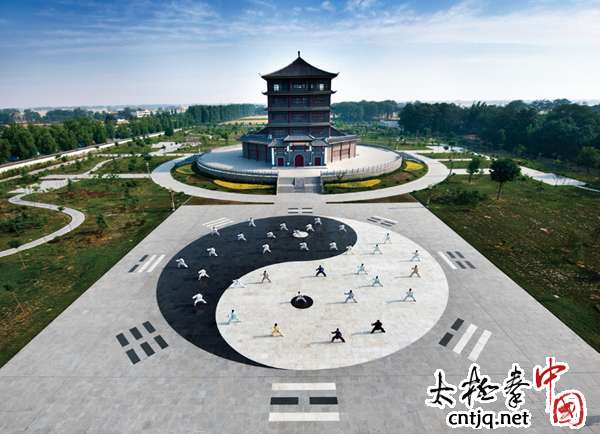The art of Tai Chi is probably the best known Chinese method of combining physical motion with mental discipline. It is also recognized as one of the most effective approaches to fitness. It is estimated that there are altogether more than two hundred million people are practicing Tai Chi around the world, and this number is increasing.
Why Tai Chi is so widely respected ? There are three main reasons. The first concerns the integration of all kinds of Martial Arts during the Ming Dynast. The second is that it combined characteristics from Taoism, Daoyin as well as breathing techniques. The third is that it deeply related the ancient practices of Yin-yang and the meridian theory of the Chinese Traditional Medicine. Thus Tai Chi is very different to Japanese martial art for example. Compared with all other Martial Arts, Tai Chi not only has a general emphasis on body-combat techniques but is also very effective for health maintenance and longevity. It is well known that Tai Chi health and fitness techniques developed over so many decades are just as effective in our modern society. Chen Wangting is recognized as the founder and originator of traditional Tai Chi.
Chen Wangting lived in the seventeenth century. At the time, Wenxian County of Henan Prvoince was under the administration of Huaiqing government. Chen Wangting was the ninth generation of a big family Chen, living in the Changyang Village, about 5 kilometers east to the county. Ever since Chen's ancestor Chen Pu, the family has been always living there. Chen Wang Ting's father and grandfather had lower ranks in the bureaucracy. Chen Wangting himself was very fond of both military and literature particularly in his youth. Later, during the late Ming Dynasty, Chen Wangting won the title of 'Wu Xiucai', a title of 'Military Scholar' ; in the early Qing Dynasty, Chen Wangting also won the title of 'Literature Scholar'. He lead troops to Shanxi and Shandong Provences against the country's enemies and accordingly he became famous. Because of his fame, in the late Qing Dynasty under the governor of Emperor Kangxi, the village was renamed as Chenjiagou, meaning 'Chen Village'.
Chenjiagou is located in the western part of the Yubei plains. It faces Taihang Mountain to the north and Yellow River to the south. This area is also famous for its cultural history.
To the south of Chen Village's is Fuxi Altar; the birthplace of Yi Culture. To the northwest is the hometown of Zixia, the famous Confucian disciple and the tomb of Dong Zhongshu, a greatest scholar in Han Dynasty; both are within
The military and literary knowledge of Chen Wangting assisted him in developing a martial art that extended to meridian theory (an aspect of traditional Chinese medicine) Yin-yang philosophy as well as the breathing techniques of Taoism. Of course this martial art became known as Tai Chi. In other words Tai Chi has proven itself over the centuries because it draws upon a range of experiences and these experiences were developed over centuries. This characteristic defines the robustness of Tai Chi.



